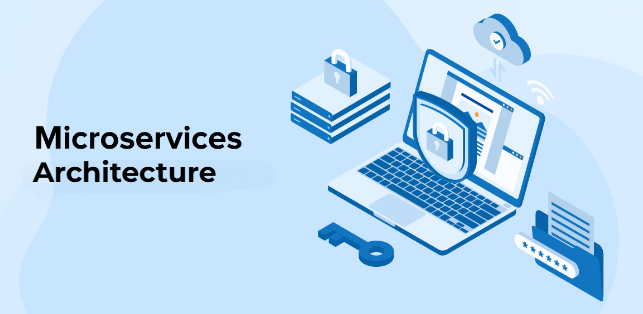
Introduction –
As organizations continue their journey toward distributed systems, securing microservices has become a top priority. Traditional session-based authentication mechanisms often fall short in cloud-native environments. In response to these challenges, token-based authentication standards like OAuth 2.1 and OpenID Connect (OIDC) have emerged as the modern solution for scalable, flexible, and secure identity management. In this blog, we will explore why OAuth 2.1 and OpenID Connect are critical for microservices architectures and how to implement them effectively.
Why OAuth 2.1 and OpenID Connect?
OAuth 2.1 is the latest refinement of OAuth 2.0, designed to simplify the security model by removing deprecated flows such as the Password Grant and recommending Proof Key for Code Exchange (PKCE) even for confidential clients. OpenID Connect builds on top of OAuth 2.0 by adding authentication capabilities, meaning it not only determines what a user can access but also who the user is. Together, OAuth 2.1 and OIDC enable single sign-on (SSO) across services, stateless authentication using access tokens, federated identity integration, and fine-grained authorization through the use of scopes and claims. Their combined power makes them the ideal choice for modern applications where scalability and security must go hand-in-hand.
Key Concepts Behind OAuth 2.1 and OpenID Connect –
In the OAuth and OIDC ecosystem, several key components work together to ensure security and usability. The Authorization Server (AS) is responsible for issuing tokens after verifying a user’s identity. The Resource Server (RS), usually a microservice, accepts and validates access tokens to authorize user actions. The Client Application acts as the entity requesting access to resources on behalf of the user. Access Tokens serve as proof that the user is authorized to access certain resources, while ID Tokens, introduced by OIDC, prove the user’s identity. Scopes are used to specify the extent of access being requested, and Claims provide specific pieces of information about the user, such as their email address or role within an organization.
How OAuth 2.1 and OpenID Connect Work in Microservices –
The flow begins when a user authenticates via the Authorization Server. Upon successful authentication, the server issues an Access Token and optionally an ID Token to the client application. When the client needs to interact with backend microservices, it includes the Access Token in the Authorization header of the API request. Each microservice then locally validates the token before processing the request. This ensures that authentication and authorization decisions are decentralized and scalable across services. Token validation typically involves verifying the signature using a public key, checking expiration times, confirming the audience, and ensuring the token was issued by a trusted issuer.
Best Practices for Implementing OAuth 2.1 and OpenID Connect –
One of the primary best practices is to use the Authorization Code Flow with PKCE for public clients such as web and mobile applications. This enhances security by protecting against code interception attacks. Another important practice is to validate tokens locally within each microservice. Local validation using JSON Web Keys (JWKS) allows microservices to independently authenticate requests without additional network overhead, improving system efficiency.
Proper use of scopes and claims is also crucial. Scopes should define what actions a user can perform, such as reading or writing data, while claims should provide contextual information about the user to help services make smarter authorization decisions. Managing token lifetimes is another best practice. Access Tokens should be short-lived, typically lasting five to fifteen minutes, while Refresh Tokens can be used to obtain new Access Tokens without requiring the user to reauthenticate.
For service-to-service communication between microservices, it is recommended to use the Client Credentials Flow. In this scenario, services authenticate directly with the Authorization Server using their own credentials and receive access tokens specifically intended for machine-to-machine interactions. Additionally, protecting sensitive APIs with mutual TLS (mTLS) or private networking further secures internal service communications.
Finally, teams must decide whether to centralize token validation at an API Gateway or allow each microservice to handle validation independently. Centralized validation simplifies management but can introduce a single point of failure, whereas decentralized validation increases system resilience and scalability.
Example Architecture of OAuth 2.1 and OpenID Connect in Microservices –
Imagine a user accessing a web application. The application redirects the user to an Authorization Server, where they log in. Upon successful authentication, the Authorization Server issues an Access Token and ID Token back to the client application. When the client makes requests to backend APIs, it includes the Access Token in the request header. The API Gateway or individual microservices validate the token before granting access to protected resources. In some cases, microservices might also need to communicate with each other, using their own access tokens obtained via the Client Credentials Flow. Throughout this flow, Refresh Tokens are handled solely between the client application and the Authorization Server and should never be passed to backend services.
Popular Tools for OAuth 2.1 and OpenID Connect Implementation –
Several tools and libraries simplify the implementation of OAuth 2.1 and OIDC. Authorization Servers like Keycloak, Auth0, Okta, and AWS Cognito are widely used for managing identities and issuing tokens. On the client side, libraries such as oidc-client-js for JavaScript, Spring Security OAuth2 for Java applications, oauthlib for Python, and passport.js for Node.js provide easy integration with authentication flows. For token validation, developers commonly use libraries like jsonwebtoken for Node.js, PyJWT for Python, and Nimbus JOSE + JWT for Java, making it straightforward to verify and parse tokens securely within services.
Conclusion –
Implementing OAuth 2.1 and OpenID Connect in a microservices architecture is essential for building secure, scalable, and flexible systems. By designing robust token flows, validating tokens properly, and managing service-to-service communications securely, organizations can protect user data and maintain the integrity of distributed applications. As these standards continue to evolve, they will integrate even more deeply with modern security practices such as zero trust architecture, least privilege access models, and federated identity management, ensuring that microservices remain secure and user-centric well into the future.

